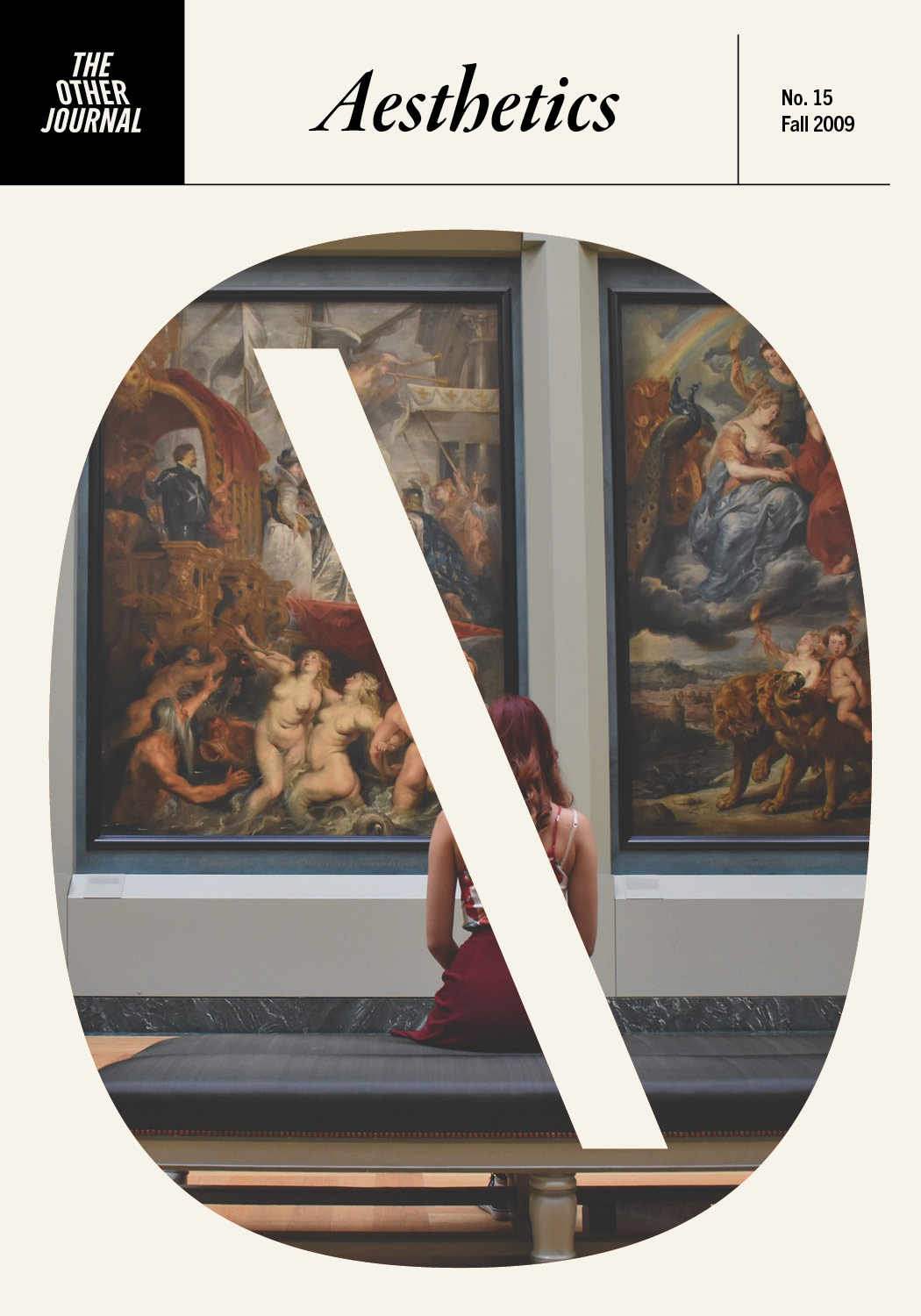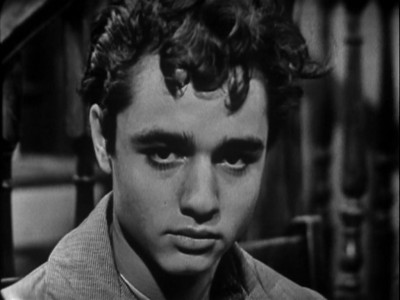Inquiry: Detail
This is a second poem by Elizabeth Hoover that uses the photography of Saul Leiter as a source for meditative dialogue on the nature of an image.

This is a second poem by Elizabeth Hoover that uses the photography of Saul Leiter as a source for meditative dialogue on the nature of an image.
This poem by Elizabeth Hoover uses the photography of Saul Leiter as a source for a meditative dialogue on the nature of an image.
A telling of the Biblical story from the perspective of the trees.
After two decades of living under an overpass, drug abuse, and self-loathing, a man’s life is transformed through Restoration Ministries, a Christian residential recovery program in Illinois.
This essay reflects on CS Lewis’s CHRONICLES OF NARNIA in light of the Arthurian quest for the Grail to show how a recovery of “life as narrative” can provide direction, release, and integration in faith formation toward an articulation of our lives as things of beauty, what Keuss refers to as “the life poetic.”
In this essay, Jim Jewell exhorts us to see the beauty around us and then announces the creation of Flourish, a new nonprofit that works to integrate environmental stewardship with other church ministries.
A reflection on the beauty of creation and redemption in the impoverished, agriculturally scarred towns along the Dominican Repulic and Haitian border.
This collection of paintings by Laura Lasworth were inspired by the life and works of the writer Flannery O’Connor.
In Part I of this interview, Gregory Wolfe discusses beauty, and in Part II he continues this discussion, riffing on the history of IMAGE journal and the importance of sleeping well.
In Part I of this interview, Gregory Wolfe discusses beauty, and in Part II he continues this discussion, riffing on the history of IMAGE journal and the importance of sleeping well.
Performance artists Industry of the Ordinary invite Americans to the ordinary grocery store for a photograph.
I will make him with red hair and a fiery tongue I will give him a country and a century a limp and strong hands I will take his wife but give him a daughter lovely enough to break his heart and will send him across the sea where he will die an old man […]
A review of Evangelicals and Empire, edited by Bruce Benson and Peter Heltzel.
Tangled Alphabets, an exhibit currently on display at The Museum of Modern Art (MOMA) in New York City, brings together the works of visual artist contemporaries León Ferrari and Mira Schendel in their visual exploration of language.
This essay explores the relationships between poetry, contemplation, and love in Thomas Merton’s writing and proposes potential applications of this theopoetic style of contemplation to our daily lives and methods of pastoral care.
In this Part II of this interview with the Scott Cairns, the poet describes his unique views on the mystical nature of poetry and connects them to his understanding of sacrament.
In this interview the accomplished poet Scott Cairns describes his unique views on the mystical nature of poetry and connects them to his understanding of sacrament.
In this poem, Karla Huston contemplates a museum exhibit of a woman’s body that has turned to soap.
This essay explores the origins of our definitions of beauty.
This essay argues for the relocation of beauty from static and detached contemplation to relational, embodied, and multisensory lived experience.
In this lyrical essay, Jessie van Eerden reflects on her upbringing in a rural West Virginia church and wonders “if the words of our childhood faith-lives—words like worship, praise, holiness—have any real clout for us when we really stare them in the face as adults and when, out of the corner of our eyes, we see more and more brokenness in the world.”
This article suggests that thinking of schools as “gardens of delight” reconnects learning, faith, and beauty.
Enjoying and fostering beauty is an integral part of our role as stewards of God’s good creation; the author discusses his vision for Renewal, a grassroots college organization that attempts to foster this stewardship.
A look into the poetic imaginary of Charles Williams, showing how creation is made for divine Incarnation.
The landscape paintings within this exhibit, which were inspired by artist Paul LaJeunesse’s stay in Iceland, reveal unity and harmony through disparate objects and spaces.
A poem by Pamela Johnson Parker.
Daniel A. Siedell discusses contemporary art from a Christian perspective with an emphasis on the work of Robyn O’Neil.
I watched Rebel Without a Cause on TV late one college night when I learned Sal Mineo was our next big draw at Once Upon a Stage dinner theatre. He would star in a stupid play about romantic entanglements, perfect for group sales and Sunday matinees filled with oldsters on field trips from the homes. […]

n Hans Urs von Balthasar’s THEO-LOGIC, Christian truth is also the world’s truth, and it is the Spirit-led task of the followers of Christ to improvise on the melody of the Logos in order to draw out the truth of the world.
Distinguished theologian William T. Cavanaugh looks at the contemporary debate around torture (if the U.S. does torture and what torture constitutes) and gives a contrasting narrative to the one typically used to contextualize torture–the Eucharist.
n this personal essay, Nancy Sleeth reflects on how we might find beauty in nature, even in our own backyards.
A poem by Maureen McQuerry
In this art exhibit and interview, Tim Lowly invites us to challenging stories by painting his daughter Temma as an icon of sorts, pointing us outside our selves and our comfort zones, toward God and the other.
In this essay, Bruce Herman reflects upon the relationships between sacrifice and beauty in his own paintings and in contemporary art.
Why should governments provide funding for the arts? This essay explores three mainstream political answers and provides a sociocultural alternative.